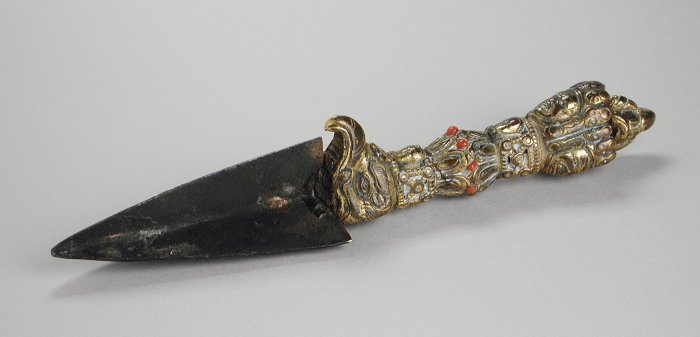Phurba Dagger: Magical Weapon That Restrains Evil And Harmful Occult Forces
A. Sutherland - AncientPages.com - The Phurba is a triple-sided Tibetan ritual dagger. It has several functions, one of which is to restrain evil and harmful occult forces. At the same time, it fights life obstacles.
Phurba dagger left: credit: Public Domain - Middle - Metropolitan Museum - Right: Public Domain
Another function of the Phurba is that it can transform all the negative energies into positive forces. The magical dagger erases emotions like violence, hatred, and other aggressive characteristics the blade holds.
Other objects of similar shape can be considered Phurba, but a real Phurba is a knife with three different segments, one of which is a characteristic three-sided blade or point. These segments symbolize the three spirit worlds.
The Phurba dagger is a powerful weapon, which as a whole represents the 'world axis' or 'axis mundi,' which combines all three spirit worlds. In ancient Greek beliefs, it is like the omphalos (navel), a religious stone artifact with extraordinary powers.
In Tibetan and Indian religious beliefs, numerology is essential. The number's spiritual energy helps destroy an enemy and fight other problems. Significant are number 3 and number 9. Among others, the Phurba also focuses on number 3 (the Buddhas manifest themselves in "3 Bodies" (or the so-called Trikaya): the Truth Body, the Body of Bliss, and the Emanation Body).
What Is Phurba Made Of?
Designed after an ancient Vedic tool, the dagger is usually made of wood, clay, bone, and metals. As it concentrates on the sacred number 3, its three-sided blade and handles decorations are always grouped into packs of 3.
The lower part of the blade is said to represent "Method," while the handle is "Wisdom."
Phurba - A Ritual Dagger Only
While it is still a dagger, it is not used outside Buddhist rituals. To ensure that it cannot harm anyone, the blade's edges remain dull and do not get sharpened at any time.
Ritual Phurba dagger, Central Tibet, 17th century. Credit: Public Domain
The purpose behind its use is to trap confused spirits as they linger between different realms. By holding these spirits in place, the Phurba dagger gives the shaman a chance to help the spirit be reborn.
The Phurba dagger is not a physical weapon but a spiritual one. Its sole purpose is to attack the opposing forces in the spiritual realm and help turn them into positive forces. It is an essential part of different mask dances performed by Buddhists.
Supernatural Abilities Of The Phurba Dagger
Buddhists believe the dagger is a magical weapon with many incredible abilities. We can name here a few of them.
The Phurba moves on its own; it can lift men off the ground if it wants; it has the strength of 4 men unless some magic formula is used against it; it moves faster than humans can run.
The faces on either side of the pommel can animate and bite the dagger holder. Once it has felt a person's blood, it can track that person without making a mistake.
'Phurba' ritual dagger 19th century Bronze, #jade and turquoise Tibet Folch collection MEB CF 3045 @mculturesmon Asia #Tibet. Image credit: akhenatenator - source - CC0
It is said that a person who the Phurba kills is sent into oblivion. On the other hand, the dagger is immune – it cannot be destroyed.
These are a few magical powers the Phurba dagger is said to possess.
How Is Phurba Dagger Used?
This dagger is a sacred object in Buddhist beliefs and is used in almost every shamanistic ritual. With its ties to the god Dorje Phurba or Vajrakilla, a wrathful deity of Tibetan Buddhism, the dagger can destroy violence. Another belief is that Dorje Phurba is a part of the dagger, which is why it has so many supernatural powers in its possession.
The Phurba dagger should never be used as a physical weapon. It is a spiritual object which targets the elements of the spiritual realm vigorously and aggressively.
One positive attribute that comes from this dagger is that it can create a hallowed or protective ground. That is why it is part of the tantric ceremonies. The Nepalese believe that the dagger becomes alive because the Jhankri (Nepali word for 'shaman') transforms his spiritual body into a Phurba and chases away evil spirits.
To the Buddhists, the Phurba is the ultimate spiritual weapon.
Updated on February 11, 2023
Written by – A. Sutherland - AncientPages.com Senior Staff Writer
Copyright © AncientPages.com All rights reserved. This material may not be published, broadcast, rewritten or redistributed in whole or part without the express written permission of AncientPages.com
Expand for referencesMore From Ancient Pages
-
 Underground World Of Cerra Naztarny Where The Navajo And White People Once Lived Peacefully Together
Featured Stories | May 29, 2021
Underground World Of Cerra Naztarny Where The Navajo And White People Once Lived Peacefully Together
Featured Stories | May 29, 2021 -
 More Than A Meteorite: New Clues About The Demise Of Dinosaurs
Paleontology | Dec 5, 2023
More Than A Meteorite: New Clues About The Demise Of Dinosaurs
Paleontology | Dec 5, 2023 -
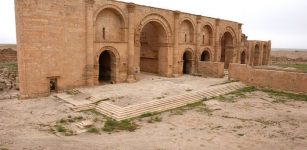 Hatra: Ancient Powerful Caravan City That Could Withstand Invading Roman Armies
Featured Stories | Dec 12, 2020
Hatra: Ancient Powerful Caravan City That Could Withstand Invading Roman Armies
Featured Stories | Dec 12, 2020 -
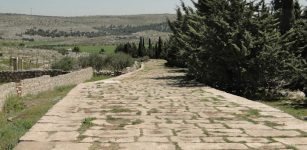 Roman Roads Laid The Foundation For Modern-Day Prosperity – New Study Claims
Archaeology | Nov 16, 2022
Roman Roads Laid The Foundation For Modern-Day Prosperity – New Study Claims
Archaeology | Nov 16, 2022 -
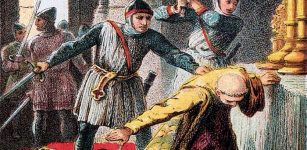 Murder Of Archbishop Thomas Becket: One Of Most Famous Crimes Of Middle Ages
Featured Stories | Jan 6, 2017
Murder Of Archbishop Thomas Becket: One Of Most Famous Crimes Of Middle Ages
Featured Stories | Jan 6, 2017 -
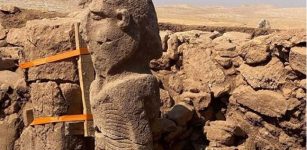 World’s Oldest Human Statue Discovered At Karahan Tepe, Turkey
Archaeology | Oct 30, 2023
World’s Oldest Human Statue Discovered At Karahan Tepe, Turkey
Archaeology | Oct 30, 2023 -
 On This Day In History: King Louis XVI Of France Was Formally Arrested And Declared An Enemy Of The People – On August 13, 1792
News | Aug 13, 2016
On This Day In History: King Louis XVI Of France Was Formally Arrested And Declared An Enemy Of The People – On August 13, 1792
News | Aug 13, 2016 -
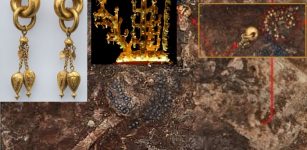 South Korea’s Silla-Era Tombs Reveal More Priceless Jewelry
Archaeology | Sep 9, 2020
South Korea’s Silla-Era Tombs Reveal More Priceless Jewelry
Archaeology | Sep 9, 2020 -
 Huangluo: Long-Hair Village Where Women Don’t Cut Their Hair – A 2,000-Year-Old Tradition Of The Yao People
Ancient Traditions And Customs | Jun 18, 2017
Huangluo: Long-Hair Village Where Women Don’t Cut Their Hair – A 2,000-Year-Old Tradition Of The Yao People
Ancient Traditions And Customs | Jun 18, 2017 -
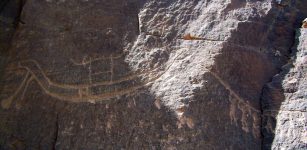 Pre-Pharaonic Petroglyphs Used To Study Egyptian Cult Of The Gods
Archaeology | Mar 15, 2023
Pre-Pharaonic Petroglyphs Used To Study Egyptian Cult Of The Gods
Archaeology | Mar 15, 2023 -
 On This Day In History: World War II: Battle Of Cape Esperance Was Fought – On October 11, 1942
News | Oct 11, 2016
On This Day In History: World War II: Battle Of Cape Esperance Was Fought – On October 11, 1942
News | Oct 11, 2016 -
 Nazar Amulet – Blue Color Wards Off The Evil Eye According To Ancient Belief
Ancient Symbols | Mar 13, 2018
Nazar Amulet – Blue Color Wards Off The Evil Eye According To Ancient Belief
Ancient Symbols | Mar 13, 2018 -
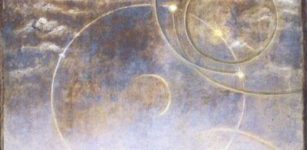 On This Day In History: Vädersol Painting Depicting ‘Sun Dog’ Phenomenon Observed Over Stockholm – On Apr 20, 1535
News | Apr 20, 2017
On This Day In History: Vädersol Painting Depicting ‘Sun Dog’ Phenomenon Observed Over Stockholm – On Apr 20, 1535
News | Apr 20, 2017 -
 Pandavleni Buddhist Caves: Sculptures, Inscriptions And Sophisticated Water Management System
Civilizations | Dec 8, 2016
Pandavleni Buddhist Caves: Sculptures, Inscriptions And Sophisticated Water Management System
Civilizations | Dec 8, 2016 -
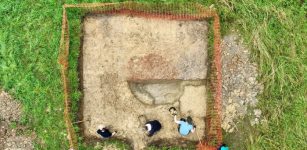 Mystery Of The Roman Tile Kiln At Brandiers Farm Solved!
Archaeology | Aug 18, 2023
Mystery Of The Roman Tile Kiln At Brandiers Farm Solved!
Archaeology | Aug 18, 2023 -
 2,000-Year-Old Roman Road Discovered In Cluj-Napoca, Romania
Archaeology | Jan 23, 2023
2,000-Year-Old Roman Road Discovered In Cluj-Napoca, Romania
Archaeology | Jan 23, 2023 -
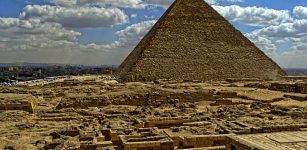 Secrets Of Cheops’ Pyramid: Does The Newly Found Chamber Contain An Iron Throne?
Archaeology | Jan 13, 2018
Secrets Of Cheops’ Pyramid: Does The Newly Found Chamber Contain An Iron Throne?
Archaeology | Jan 13, 2018 -
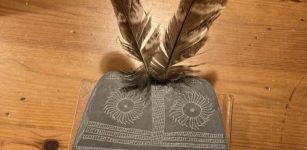 Were Owl-Shaped Plaques Children’s Toys In Copper Age?
Archaeology | Dec 1, 2022
Were Owl-Shaped Plaques Children’s Toys In Copper Age?
Archaeology | Dec 1, 2022 -
 Europe’s Largest Predatory Dinosaur Unearthed On The Isle Of Wight
Archaeology | Jun 11, 2022
Europe’s Largest Predatory Dinosaur Unearthed On The Isle Of Wight
Archaeology | Jun 11, 2022 -
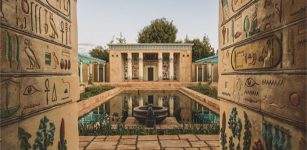 World’s First Recreated Ancient Egyptian Garden Is Now Open To The Public
News | May 17, 2022
World’s First Recreated Ancient Egyptian Garden Is Now Open To The Public
News | May 17, 2022


